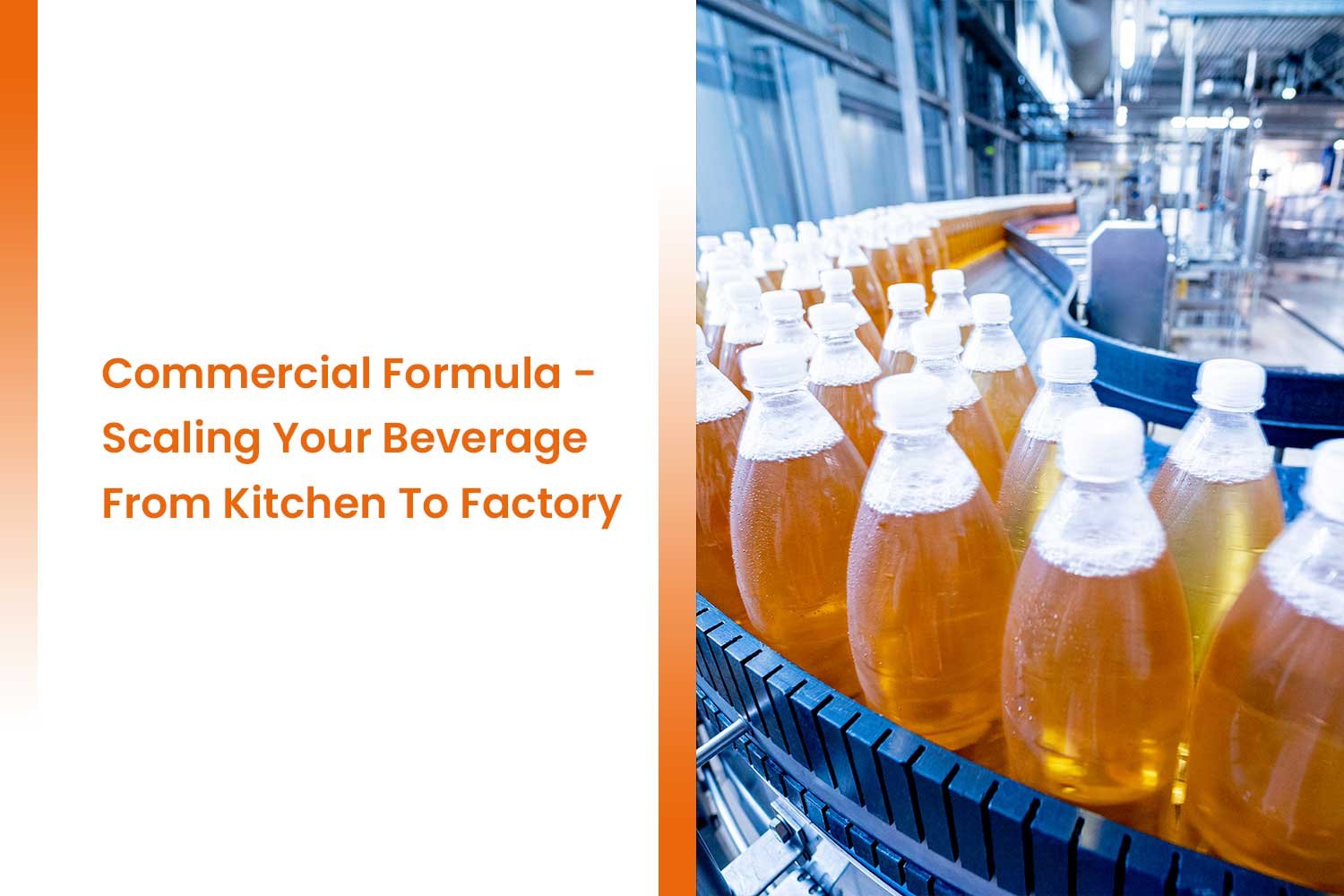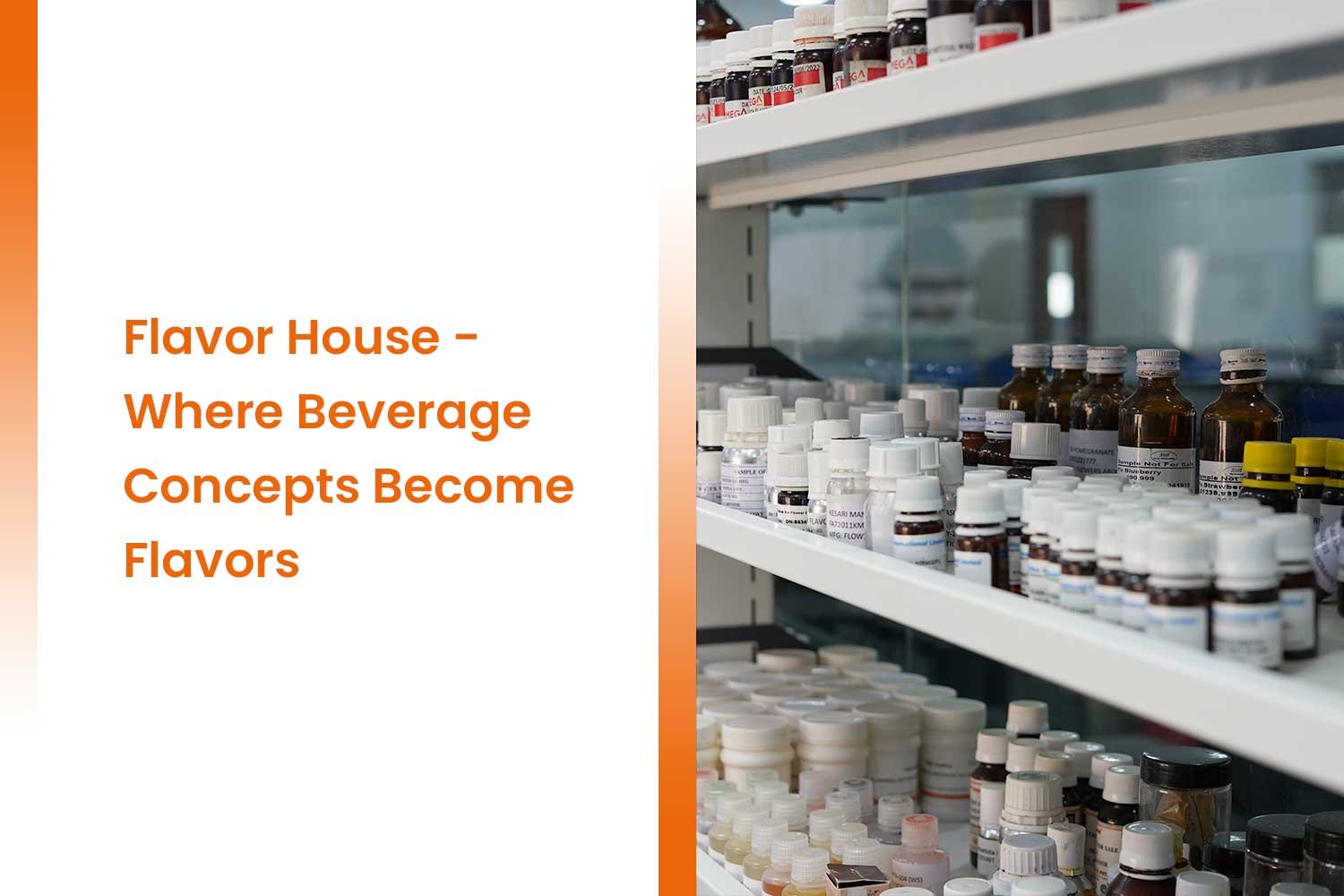Every great beverage starts with a complete understanding of the process behind the product. From your first test batch to your final shelf-ready version, there’s a language the industry speaks. And if you don’t know it, things can slip through the cracks. Whether it’s GRAS status, batch coding, or understanding how stable your product is, these terms are the big market players. Know them, and you move with focus, communicate better with your team, and make smarter decisions at every step. In this blog, we’re breaking down 10 beverage development terms that help you succeed.
Brix – Balancing Sweetness And Texture
Meaning
Brix is the unit that measures the concentration of sugar, in simple words, how much sugar is present in the beverage. It affects the flavor, consistency, density of calories, and microbial behavior in the beverage.
Usage
The beverage formulation experts adjust the brix levels to control flavor, calorie density, and the mouthfeel of your drink. The high-brix helps to preserve the longer shelf life of the beverage, and the consumers feel. Lower Brix level helps to reduce calories, but need flavor support or natural texturizers to avoid thickness. Getting the right Brix level needs a proper sensory and stability strategy.
ABV / ABW – Important For Alcohol Control And Label Approval
Meaning
ABV stands for Alcohol by Volume, and ABW stands for Alcohol by Weight shows how much or how heavy alcohol is present in a beverage compared to its total volume or weight. Mostly, ABV is used on the labels.
Usage
- Required to be on packaging for legal and consumer transparency
- Defines excise duties and shipping restrictions
- Ensures the consistent formulation and regulatory approval
Commercial Formula – Scaling Your Beverage From Kitchen To Factory
Meaning
A commercial formula is designed to scale up the original recipe, made to work in real-world production. It is done to produce the large batches, without losing the taste and texture of the beverage. Food technologists create it using proper ingredients, process the steps that fit the factory, and take proper measurements to keep every batch consistent.
Usage
The commercial formula is what brings your recipe to life at the manufacturing level. It helps with:
- Making clear batch sheets for large production
- Scaling up without losing the original taste, feel, or quality
- Moving smoothly from small test batches to full production
- Getting a clear picture of cost, yield, and compliance
Batch Sheet – Blueprint For Every Beverage Production Run
Meaning
A batch sheet is a simple, step-by-step guide that is used during the manufacturing of the beverage. It lists the exact and proper ingredients, quantities, and processes that are needed to make the beverage. It includes:
- Names and amounts of the ingredients in the beverage
- The mixing and processing steps of the drink
- Expected output from the beverage recipe formulation
- Notes on temperature or equipment
Usage
Batch sheets help with:
- Keeping the product the same in every batch
- Avoiding mistakes during production
- Giving formulators clear instructions to follow
- Tracking what went into each batch, if something needs checking later
Without a batch sheet, each run can turn out differently. This one document helps make sure the product tastes, feels, and performs the same every time.
Commercially Viable Ingredients- Build For Large Beverage Production
Meaning
Commercially viable ingredients are those that stay stable and perform properly at every stage, from preparation to packaging to delivery. They help you maintain the beverage’s taste, texture, and appearance without changing over a longer time. These ingredients are chosen to hold up to the real production and storage conditions.
Usage
In beverage product development, the goal is to use ingredients that:
- Can handle processing, filling, and transport
- Stay available in all seasons without a rise in prices
- Keep the drink’s quality consistent batch after batch
- Fit the planned budget without increasing production costs
If an ingredient spoils easily, separates in the bottle, or costs too much to scale, it can slow everything down. Choosing the right ingredients keeps the drink stable, affordable, and ready to grow.
Flavor Ingredient Data Sheet (FIDS)- Flavor Details That Keep You Compliant
Meaning
A Flavor Ingredient Data Sheet (FIDS) is a document from the flavor supplier that breaks down what ingredients are present in a flavor mix. It highlights ingredients that may be limited by food laws, like alcohol or synthetic compounds, and helps the beverage formulators to find out how that flavor impacts the final product.
Usage
FIDS helps with:
- Label accuracy – Making sure claims like “natural” or “no alcohol” are correct
- Regulatory checks – Confirming the product follows food safety in beverage production rules in your country or export market
- Tracking alcohol content – Since many flavors use alcohol as a base, that small amount may still count toward total ABV
- Avoiding red flags – Some ingredients are fine in one region but banned in another; FIDS gives clarity early
Skipping this step could mean mislabeling, failed audits, or launch delays. A quick review of the FIDS keeps your beverage formula clean, legal, and market-ready.
Flavor House – Where Beverage Concepts Become Flavors
Meaning
A flavor house is a team of experts, like flavor chemists and food scientists, who create and test custom flavors for drinks and foods. They combine ingredients, aromas, and taste profiles to develop flavors that fit exactly what you’re looking for.
Usage
Flavor houses help you:
- Build unique or trending flavors that appeal to your target audience
- Make sure the flavor holds up during production and storage
- Choose between off-the-shelf mixes or fully custom creations
- Navigate natural flavor rules or clean-label needs
Sensory Analysis – Where Taste Gets Real
Meaning
Sensory analysis is used to test the taste, smell, and appearance of the beverage. It is the step that checks what your product delivers the flavor, texture, and feel you had in mind. This usually starts with your product or flavor team, who review how the drink looks, smells, and tastes. Then it moves on to consumer testing, where people try it and give real feedback.
Usage
- Helps to perfect flavor, aroma, and mouthfeel
- Catches off-notes and texture issues early
- Confirms your drink matches brand claims
- Let you hear from actual consumers before launch
GRAS – The Safety Stamp To Build Consumers’ Trust
Meaning
GRAS certification for ingredients stands for “Generally Recognized As Safe.” It shows that an ingredient is proven safe by beverage recipe formulation experts or through long-term use, without needing extra approval.
Usage
- Speeds up product approval
- Shows your drink is made with safe ingredients
- Builds trust with buyers and consumers
- Helps with compliance and export
Stable Storage & SKU: Keeping Your Drink Shelf-Ready & Easy To Track
Meaning
The term stable storage means the drink maintains its quality from production to the shelf. An SKU in the beverage business is a product code used to track each version of your drink, by size, flavor, or package.
Usage
- Keeps your product safe and consistent
- Helps to track batches, spot issues, and manage beverage development stock
- Makes your production and delivery process more reliable
Turn Beverage Development Terms Into Profitable Drinks – Let’s Get Started
You don’t need to be a food scientist to build a market-ready drink, but you need to know the drink business terminology for success. From GRAS approvals to batch sheets, from shelf stability to flavor formulation, all beverage development terms are important when you are scaling a product. But knowing these only for large production doesn’t make you win. For this, you need expert guidance. Our beverage recipe formulation experts are there to help you at every step. You’re just a call away. Reach out to us on +91 8130404757
Let’s turn your idea into something that works.







